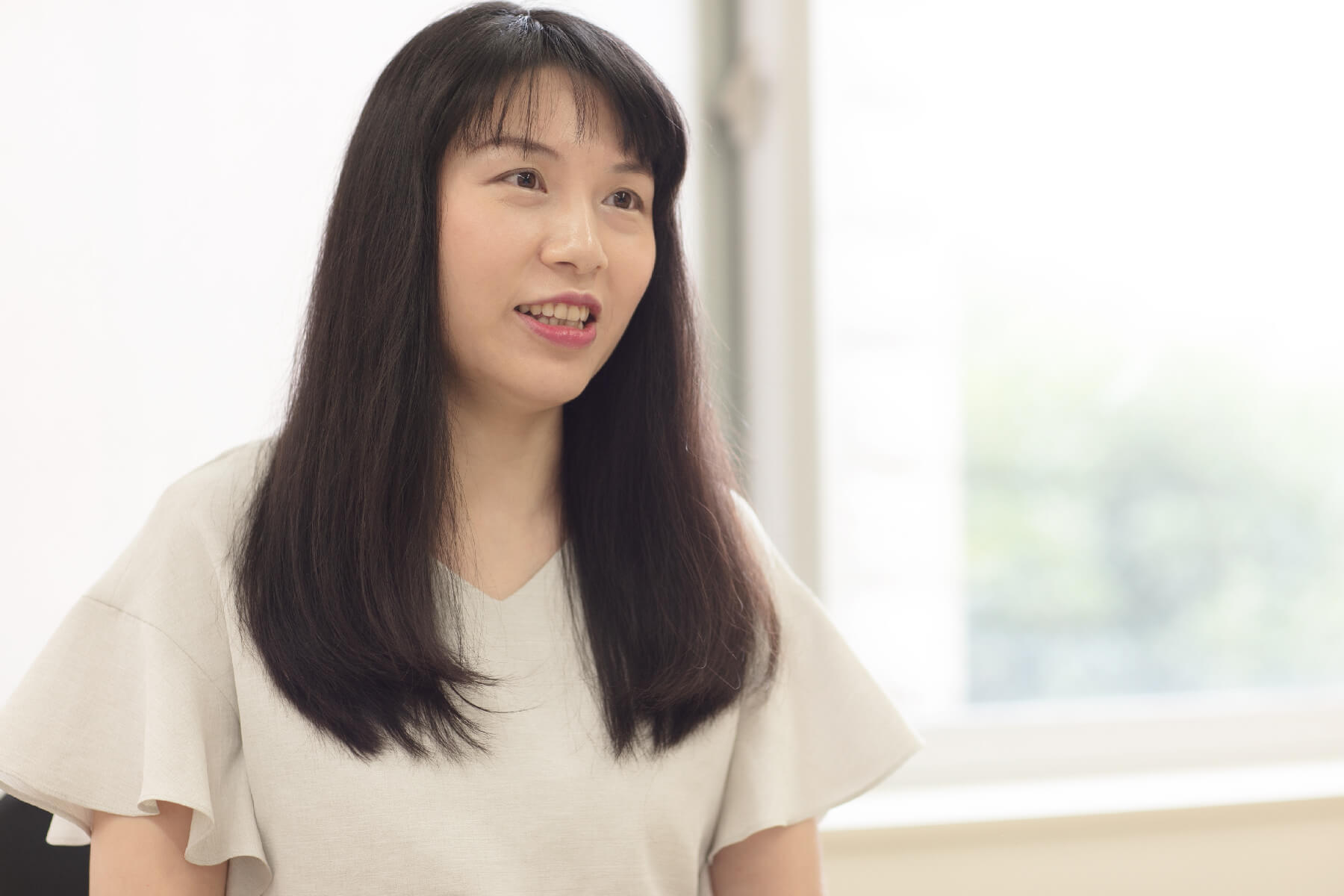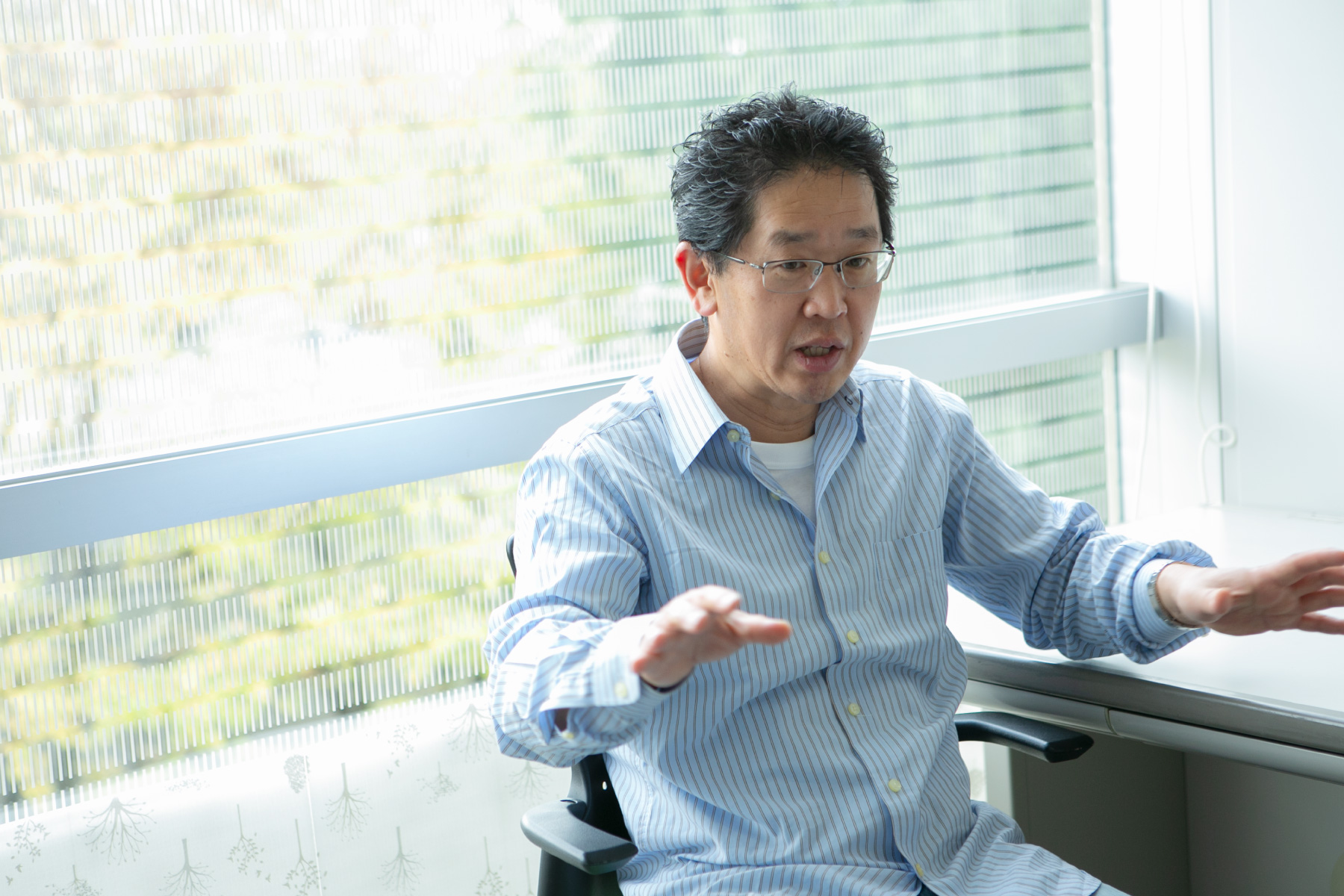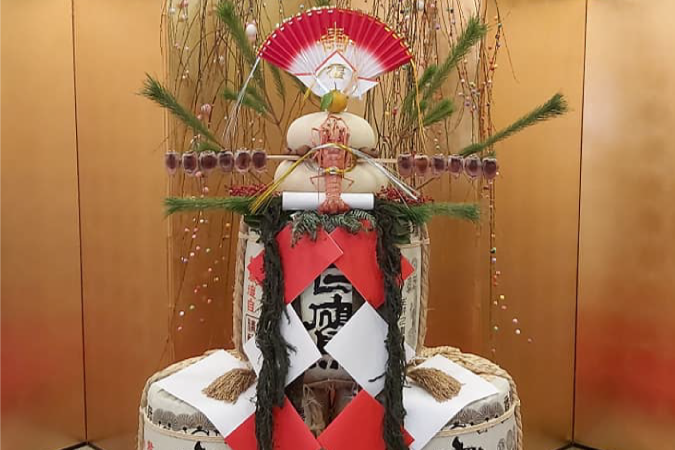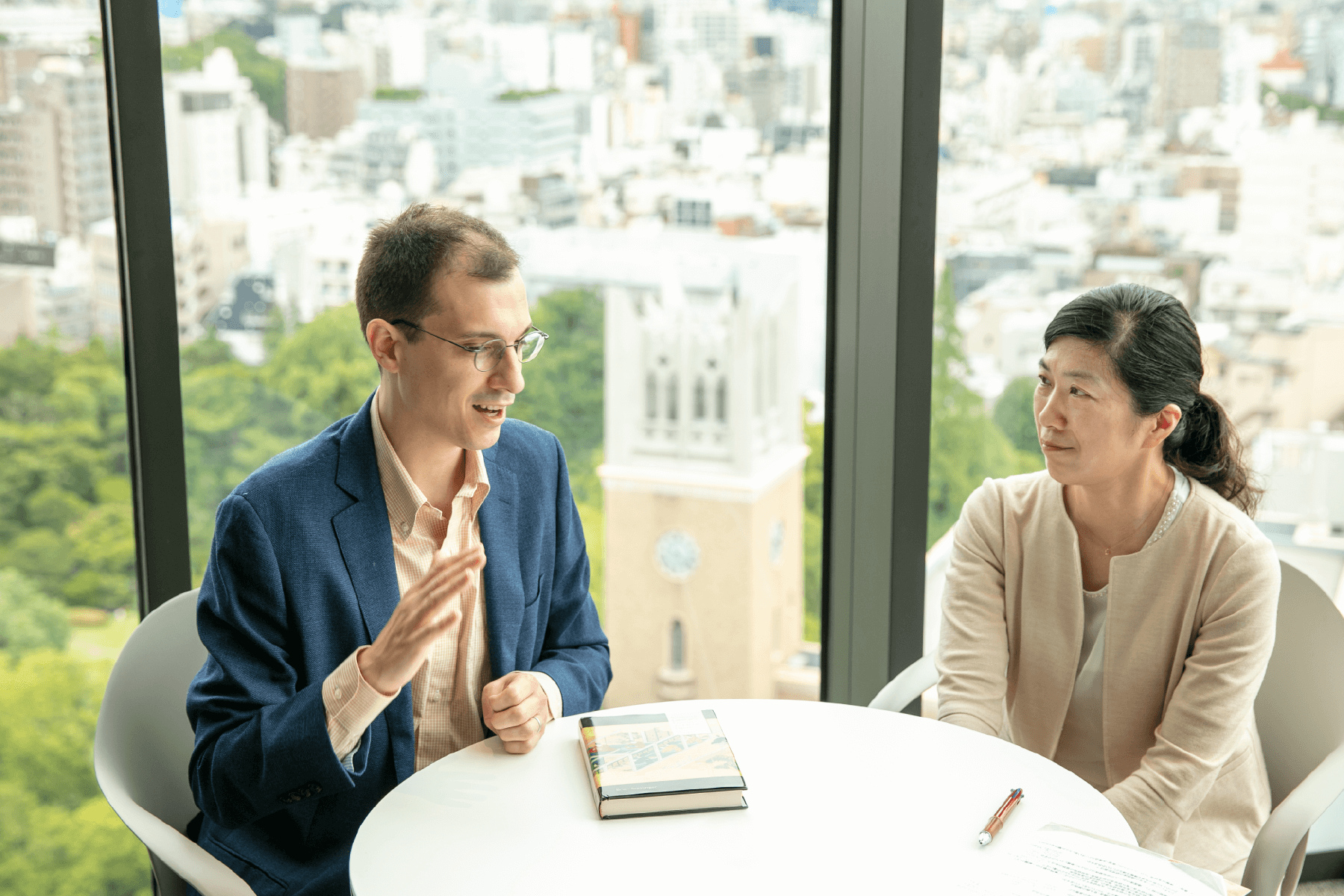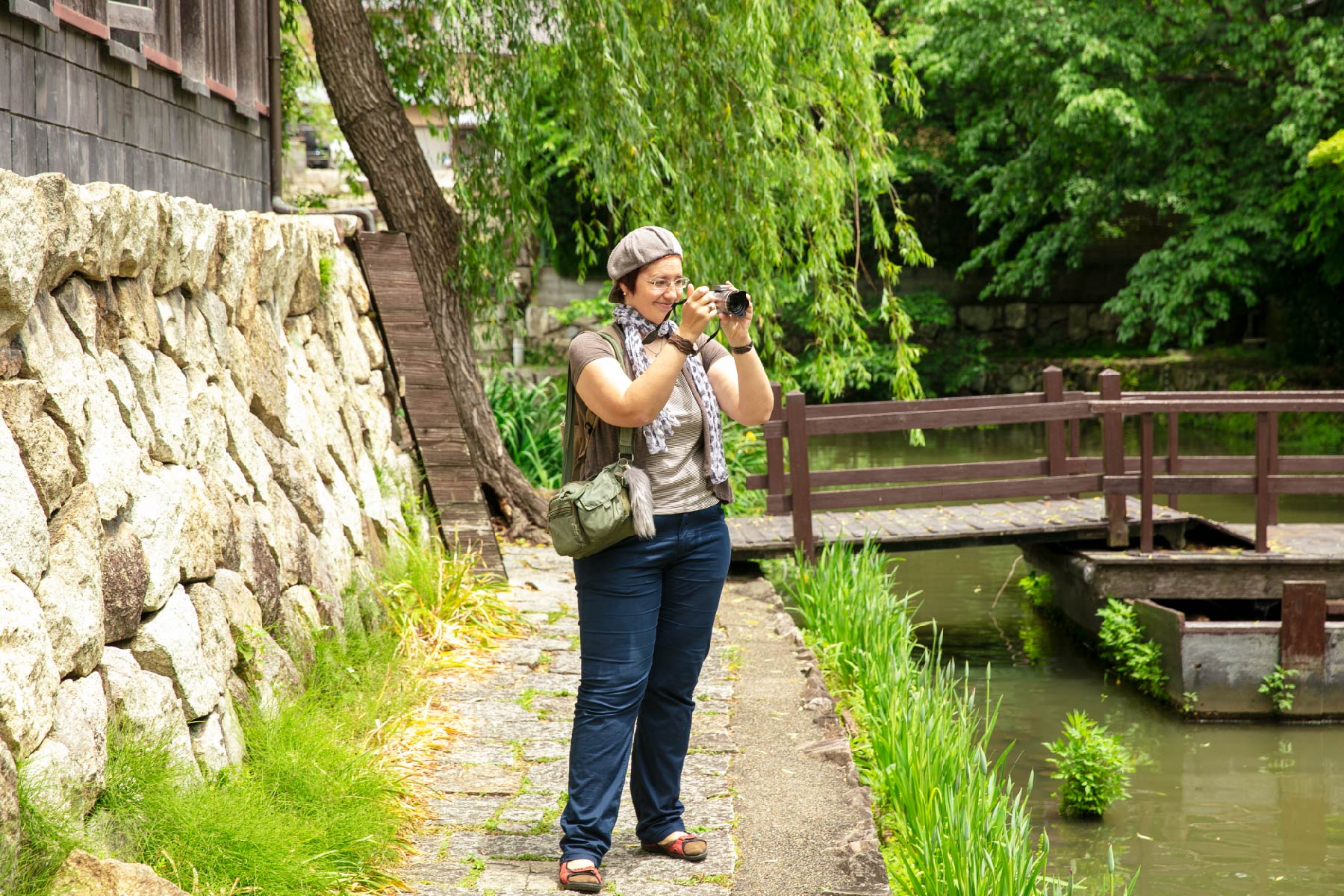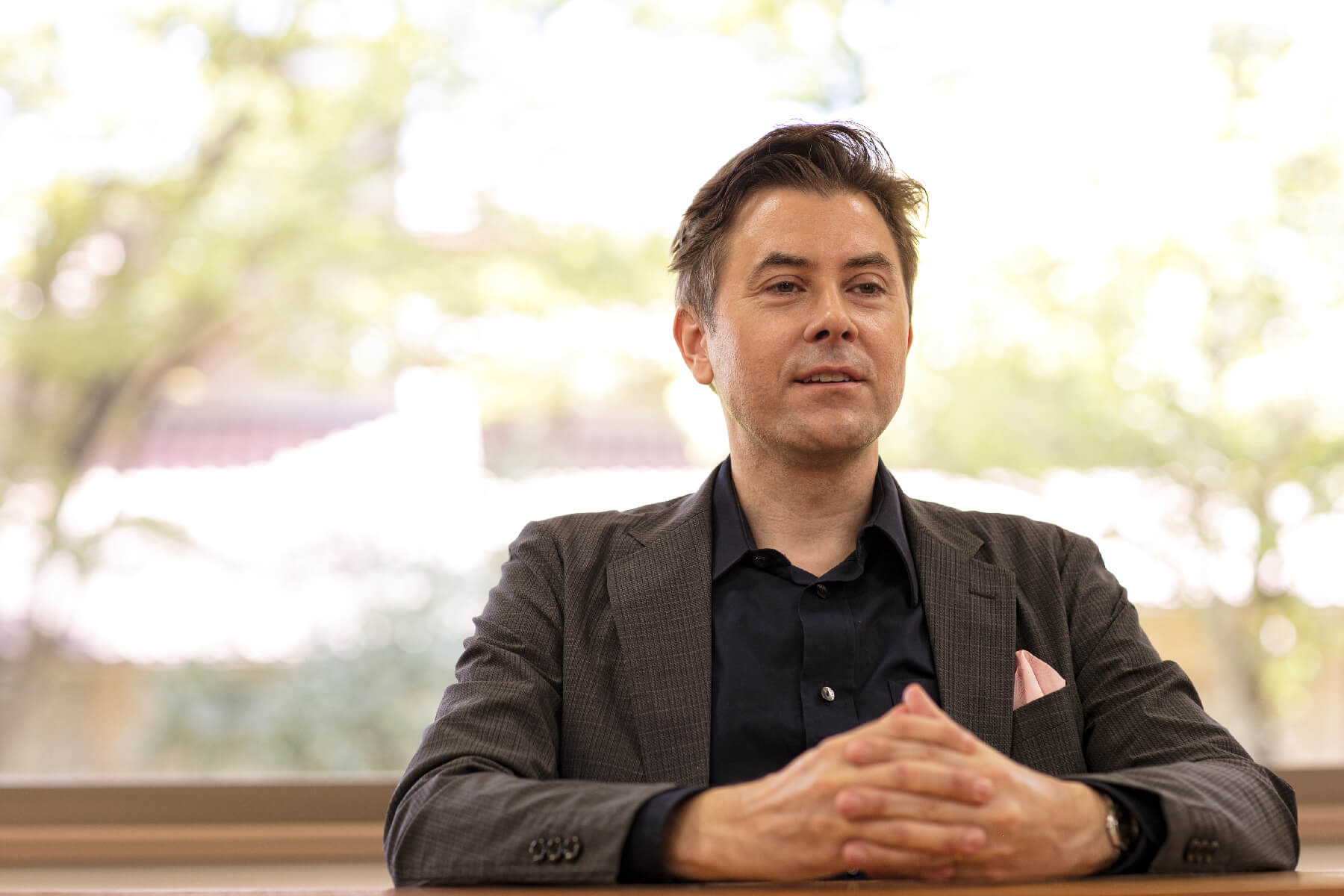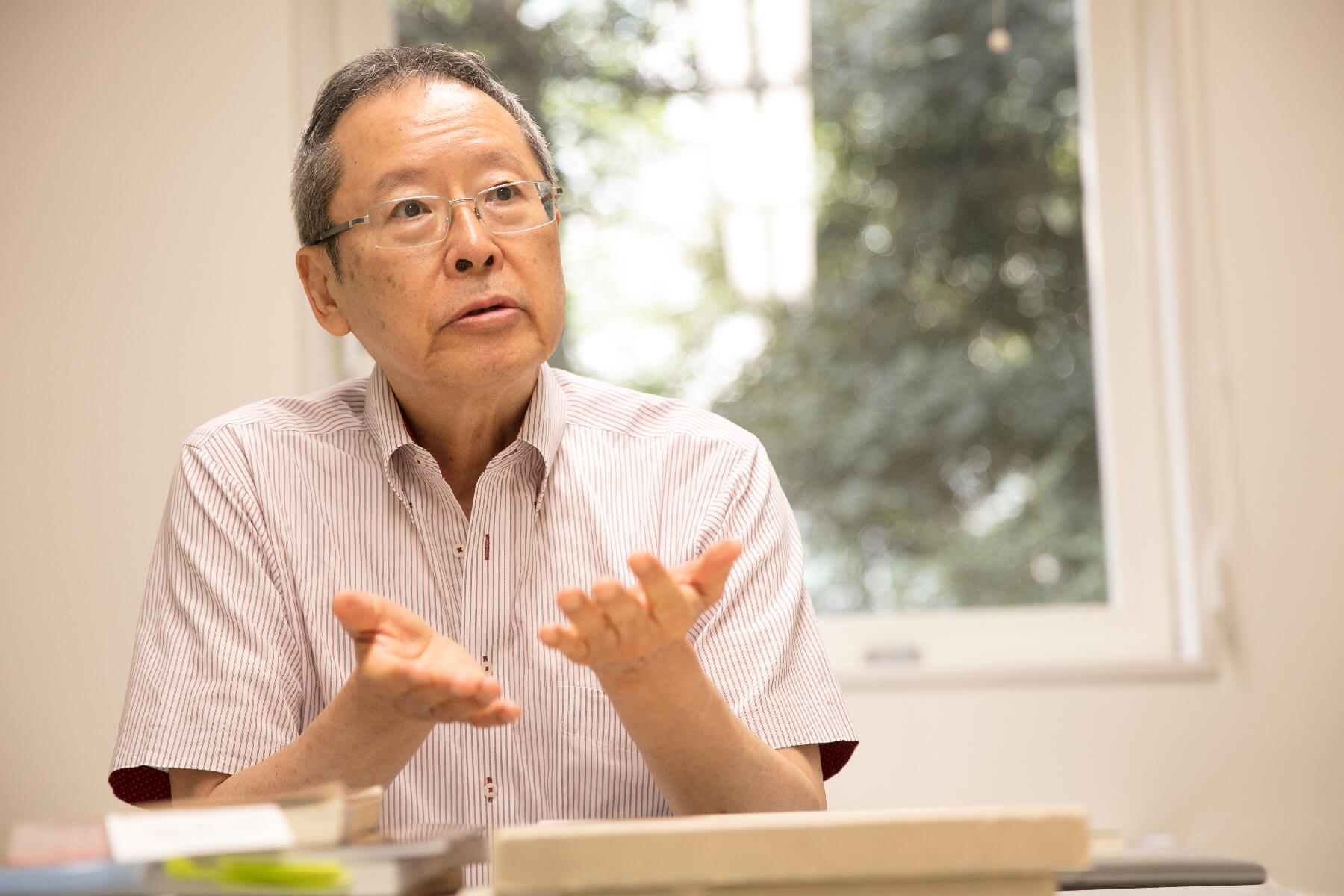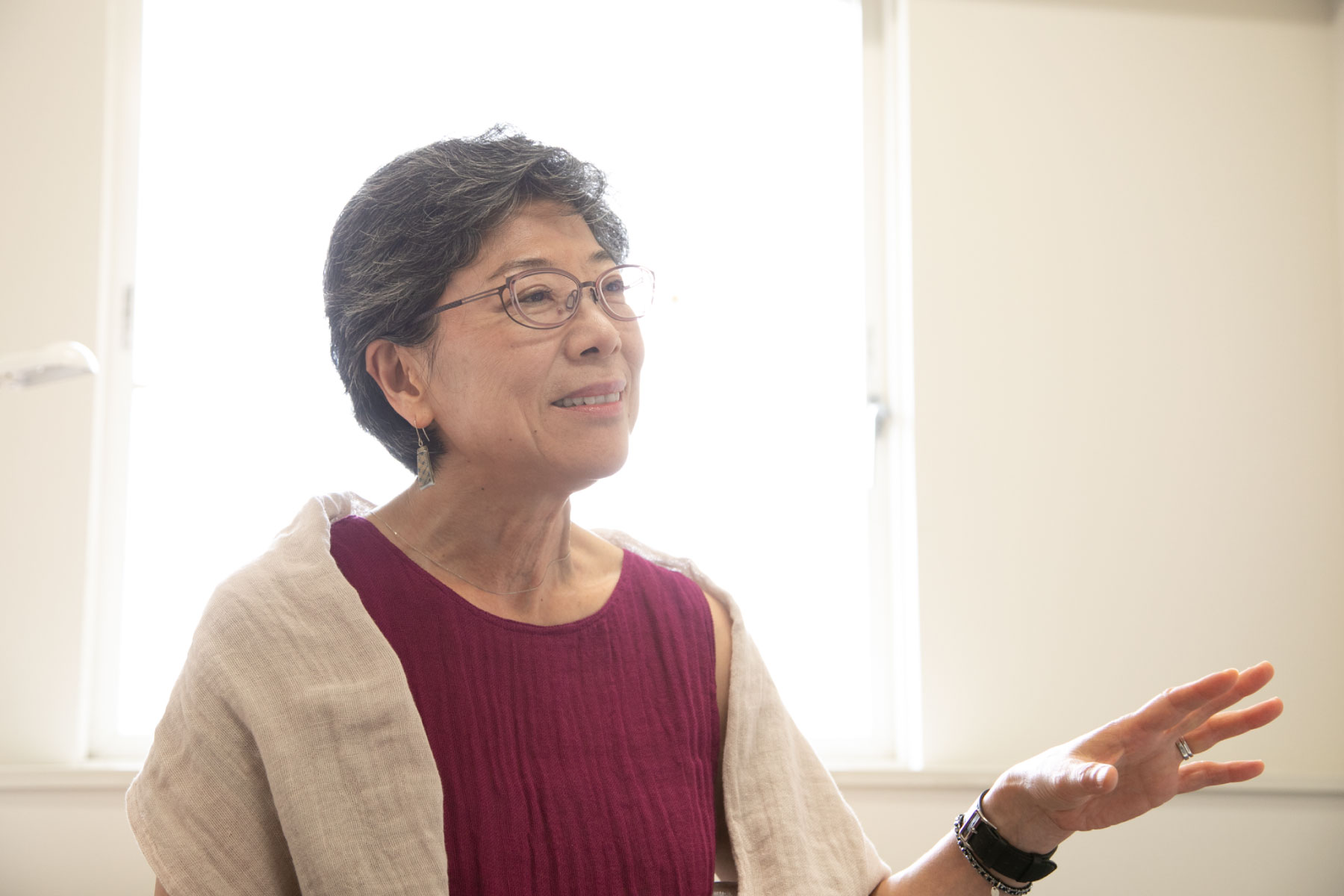
Japanese-Chinese poetry that was nurtured under the strong influence of Chinese culture
Your field of research is Japanese-Chinese poetry. What specific research do you conduct?
I conduct research on the Japanization of Chinese poetry in the Heian period (794–1167), that is, the Japanese elements.
Different from a mere imitation of Chinese poetry, Japanese-Chinese poetry in the late 9th century showed the intention of creating the expression of new Chinese poetry by introducing traditional Japanese culture and Japanese poetry elements. Originally speaking, such Japanese expression was called washu in China. It was considered a poor and awkward expression and was considered a defect that should be avoided. I approached such Japanese expression from a different perspective and came up with the idea that it was created as a result of rethinking about Chinese poetry in line with a Japanese aesthetic sense, Japanese natural features and Japanese culture. That is, the application of Japanese poetry expression to Chinese poetry made the expression of the Japanese poetry at the time as good as or better than Chinese poetry.
I studied at Nagoya University for four years as a doctoral student and wrote a doctoral thesis entitled, “Japanese Poetry Expression of The Shinsen Man’yoshu (Newly Compiled Man’yoshu).” The Shinsen Man’yoshu (the first volume was compiled in the year 893 and the second volume was compiled in 913) is a special a mixed collection of Japanese and Chinese poems in which Japanese and Chinese poems are arranged together. While studying at Nagoya University, I conducted research on the specific Japanese expression used in Japanese-Chinese poetry at that time. However, in the last study I conducted while staying in Japan, I researched not only the expression but also the Japanese aesthetic sense, Japanese culture, and Japanese cultural features behind this expression and examined how people in the late 9th century sorted the expression from Chinese poetry.
You researched how Heian aristocrats sorted out and developed Chinese poetry expression that was suitable for them, didn’t you? Could you please give me some specific examples of this?
For example, we have the Japanese expression “ikinkankyo,” which is based on a Chinese proverb that means “returning to one’s hometown in glory.” In Japanese-Chinese poetry, the word nishiki (meaning “cotton” in Japanese) is associated with fallen leaves and is often used as a figurative expression for fallen leaves. In Japanese poetry as well, I found many expressions that associated fallen leaves with nishiki and ikinkankyo. However, Chinese has few expressions that compare fallen leaves to cotton, but many expressions that compare flowers to cotton. I think that this is an example of Japanese people prioritizing their old aesthetic sense and creating new expressions.
In addition, the last part “kankyo” of the Japanese phrase ikinkankyo means “returning to the hometown where one was born and raised,” that is, succeeding in life and returning to one’s hometown in glory. However, all of the aristocrats who composed Japanese and Chinese poems during the Heian period were born in the Heian Palace and had no hometown to return to. Therefore, they focused on “ikin.” They omitted “kankyo” or used it to mean, “leaving for their new posts in rural areas.” This is an example of people sorting out expressions according to their social conditions.
You discovered many things by examining expressions, right? However, it seems that such discoveries took a great deal of time because you had to examine each expression used in a collection of Chinese poems and conduct research on the social background in the Heian period.
During my previous stay in Japan, I spent most of my time at the National Diet Library, except for when I went to Tokyo University of Foreign Studies, where I had been accepted. When looking for lodging, I prioritized going to the library and looked for a place that was close to the National Diet Library. The National Diet Library provided reference services that enabled me to ask the staff to look up the materials I wanted on the Internet. This service was a great help because it saved me a great deal of time and trouble, as I did not need to look up the related materials by myself.
In addition, Tokyo University of Foreign Studies is closely associated with Xiamen University, my regular workplace. Since I was a doctoral student, I have received great help from Professor Murao Seiichi, who took charge of accepting me. I specialize in Japanese-Chinese poetry. However, because I conduct research on Japanese poetry elements, it is also necessary for me to know a great deal about Japanese poetry. Professor Murao, whose specialty is Japanese poetry literature, gave me a great deal of valuable advice and instructions during my last stay in Japan. In fact, his book includes a paper on hometowns in Japanese poetry and this paper gave me a lot of reference information that was useful for examining the Japanese phrase ikinkankyo.

Cartoons triggered her interest in Japanese culture.
What triggered your interest in the world of Chinese poetry in the Heian period?
When I was a university student, I mainly studied the Chinese translations of novels by Kawabata Yasunari. I could read about Japanese culture and there was a profound Japanese aesthetic sense in his novels, which was very interesting to me. After I entered graduate school, there was a teacher whose specialty was Japanese literature. He studied The Kaifuso (Fond Recollections of Poetry). This triggered my interest in collections of Japanese-Chinese poems. The Kaifuso was the first collection of Chinese poems in Japan.
Were you initially interested in Japan?
In fact, I was so crazy about Japanese manga when I was a fourth-grader that I started to draw my own. (Laughs). As I grew older, I had to concentrate on my study and stopped reading manga. However, I believe that my interest in Japanese culture—which I had read about in manga during my childhood—was the reason why I majored in the Japanese language when I entered university.
What particular manga title do you think you were influenced by?
NATURAL by Narita Minako. The protagonist is a boy from Peru. He practices kyudo, Japanese archery, in Japan. He also travels around Aomori and enjoys experiencing nature, living, and festivals there. Narita Minako produced many works set in foreign countries, including New York, but she seems to have started to gradually draw Japan and Japanese culture in her cartoons. This cartoon triggered my interest in Japanese culture and a Japanese aesthetic sense.
Did you discover anything new about Japanese culture from living in Japan this time?
In fact, my research was so difficult that I took a flower arrangement lesson to relieve stress. I have always been interested in flower arrangement. Because I was given a good opportunity to stay in Japan, I wanted to do something that I could only do in Japan. I was conferred full mastership in flower arrangement during my one-year stay in Japan. It seems that taking the next steps will take me three more years. The flower arrangement teacher taught me not only how to arrange flowers but also a lot about life. I had studied Japanese literature and Japanese culture for many years; however, I strongly felt that I still had a lot to learn.
What in particular impressed you about what the flower arrangement teacher taught you?
While I am arranging a flower, there are flower materials, a pair of scissors and a cup of water on the desk. I learned through the lessons that I always had to keep them tidy. I think such Japanese unique aesthetic sense and manners are really good. I learned to think of acquiring that good habit as a person. I was also taught the tea ceremony in the last lesson. I want to learn the tea ceremony as well someday.

Comments from Professor Murao Seiichi at Tokyo University of Foreign Studies, which accepted Dr. Liang Qing.Professor Murao, under whom Dr. Liang Qing has studied since her days in the doctoral course, also taught Dr. Liang Qing’s mentor. Professor Murao said, “Her teacher also often went to the National Diet Library in Japan and performed overwhelming research diligently. I think that Dr. Liang Qing also took on this style. Recently, I introduced the Wakan Roeishu (Collection of Japanese and Chinese Poems for Singing) in my seminar. In that class, she worked hard holding active discussions with students and instructing them.”
Dr. Liang Qing deepened her understanding of Japanese culture for a year.
This was your first time to stay in Japan in the five years since your study in the doctoral course. Did you have any trouble during your stay?
I could not get a mobile phone contract. I needed a credit card for a contract but my Chinese credit card was not accepted. I was required to have a telephone number of my own to get a credit card in Japan. It was probably because my stay was a short one, one year. I applied for it many times, but all of my applications failed. In the end, I could not get a telephone of my own during my stay, which was inconvenient for me.
How about your research environment?
I was very happy with it. As I said earlier, Professor Murao—under whom I had studied previously—works at Tokyo University of Foreign Studies. Professor Murao had also taught my respected teacher who instructed me in the master’s course. I also participated in his seminar and learned a lot from his comparisons of Japanese and Chinese poems.
When I was a doctoral student, I was studying in Nagoya. But I was happy to stay in Tokyo this time. Many museums of art, museums and libraries in Tokyo held exhibitions about literary research, and while staying in Tokyo, I went to see masters’ autographs, books and paintings on folding screens. For example, I went to see the exhibition “Kukai and Books about Esoteric Buddhism,” which was held at Keio University’s library. It gave me a good opportunity to study Japanese culture.
It was also significant that I could participate in many study and academic meetings and have contact with the latest research. If I only live in China, I cannot tell what research is being conducted in Japan. I got many hints from studying with other researchers. I will turn my eyes to history and culture as well as literature from now on and conduct research on the ancient exchanges between Japan and China.
(Interview conducted in August 2018)



